
Beryl Stone Buyer’s Guide — Meanings, Properties, History, Benefits, & More!
 What do emeralds, aquamarines, and morganites have in common? They’re all stunning types of beryl stones!
What do emeralds, aquamarines, and morganites have in common? They’re all stunning types of beryl stones!
Beryl is a jaw-droppingly gorgeous and diverse jewel. With several varieties, including the famous emerald and the noble heliodor, beryl has dominated the gemstone scene for millennia.
Whether you’re seeking healing crystals, meditative aids, or some fabulous jewelry, be sure to keep a lookout for beryl. With so many different types of beryl to choose from, we’re confident that the perfect beryl gem is out there for you.
With that said, in this comprehensive guide, we’ll be diving into beryl’s specifications and the properties that make this gem worthy of your attention.
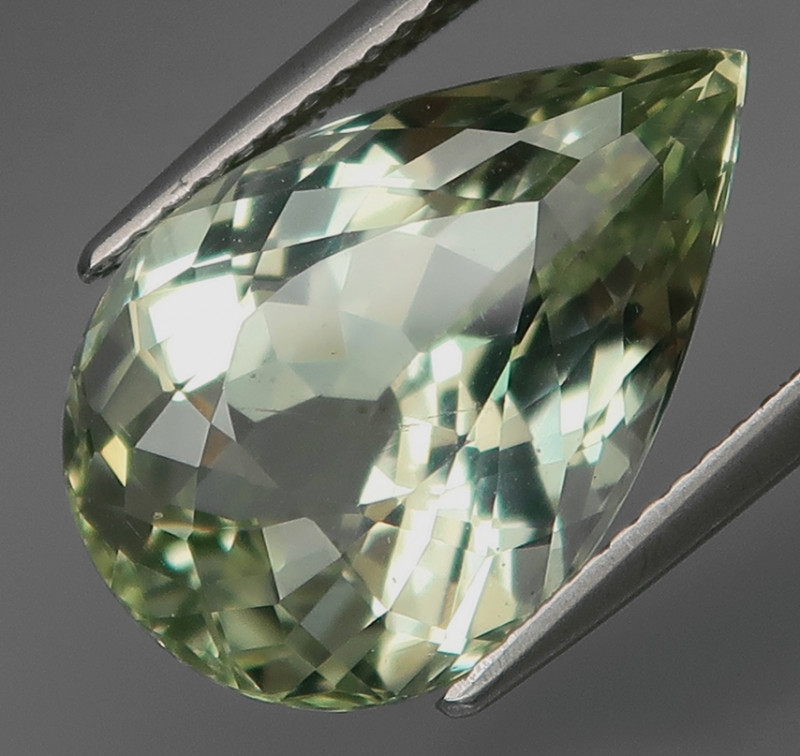
What is a Beryl Stone?
Beryl stones are minerals made of beryllium, aluminum, silicon, and oxygen. These dazzling gemstones come in many colorful varieties, so let’s go over each one.
Goshenite

Goshenite is pure, colorless beryl. Luckily, these stones are abundant and affordable. If you’re looking to build a complete beryl collection, goshenite is an excellent starting gem.
Emerald
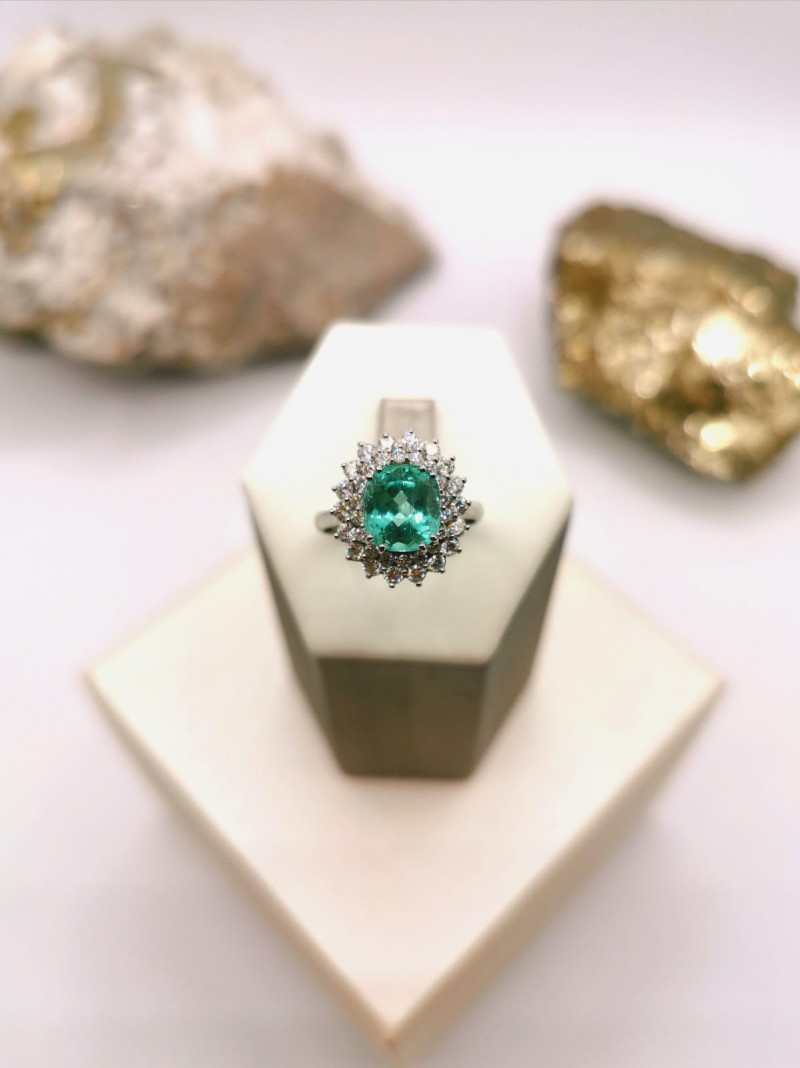
Is beryl the same as emerald? Well, the elegant emerald is actually a variety of beryl!
This rich green gemstone is one of the most beloved jewels in the world. Emerald is especially popular with royals and celebrities. Fun fact: in 1953, former First Lady Jacqueline Kennedy wore a million-dollar emerald-and-diamond engagement ring!
If your birthday falls in May, emerald is your beryl birthstone.
Aquamarine
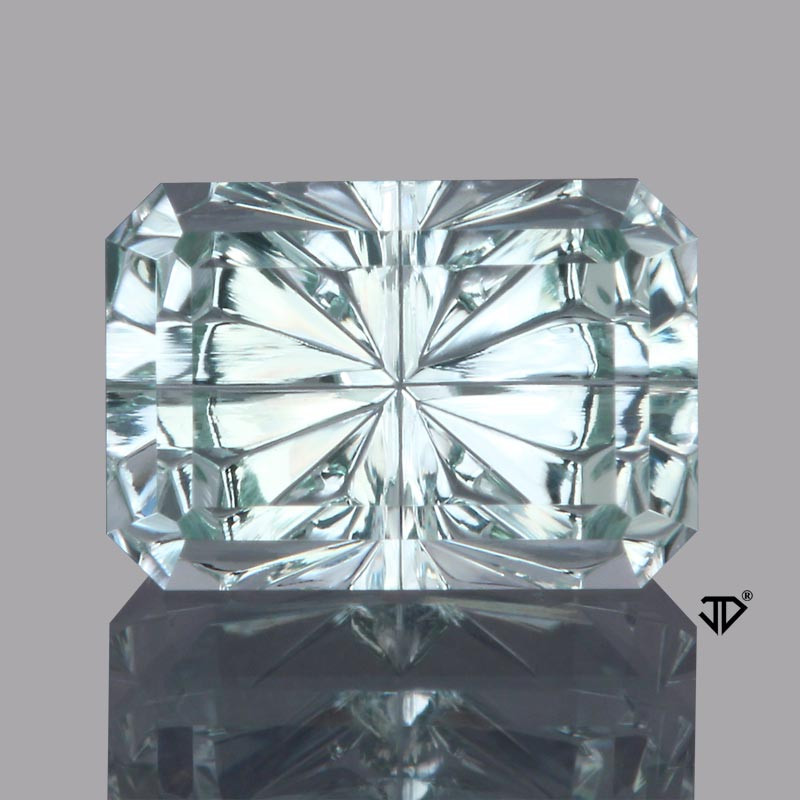
Another well-known variety of beryl is aquamarine, a blue or cyan-colored jewel that shimmers like the sea. These blue gems are one of two March birthstones and make stunning 19th wedding anniversary gifts.
Morganite
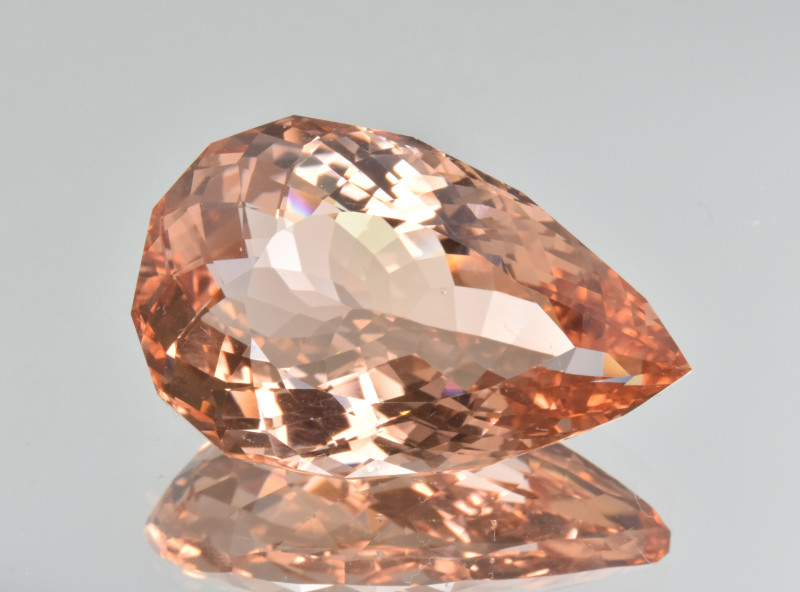
Morganites are bubbly pink to peachy-pink beryls. While not as popular as emeralds or aquamarines, these pink-colored gems are sure to captivate you with their delicate beauty. They have also been rising in popularity as diamond alternatives for engagement rings!
Heliodor
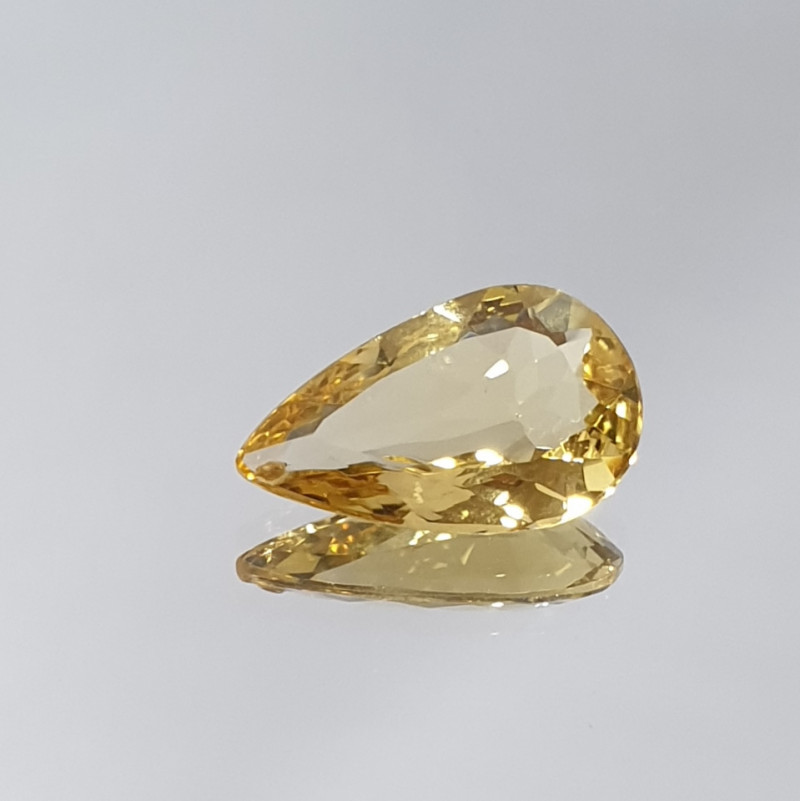
Heliodor is a sparkling yellow beryl variety. Heliodor means “gift from the sun” in Greek. Like its namesake, these golden-yellow gems capture the radiance of the sun. Heliodor stones are commonly sourced and budget-friendly, making them excellent jewelry choices.
Red Beryl (Bixbite)
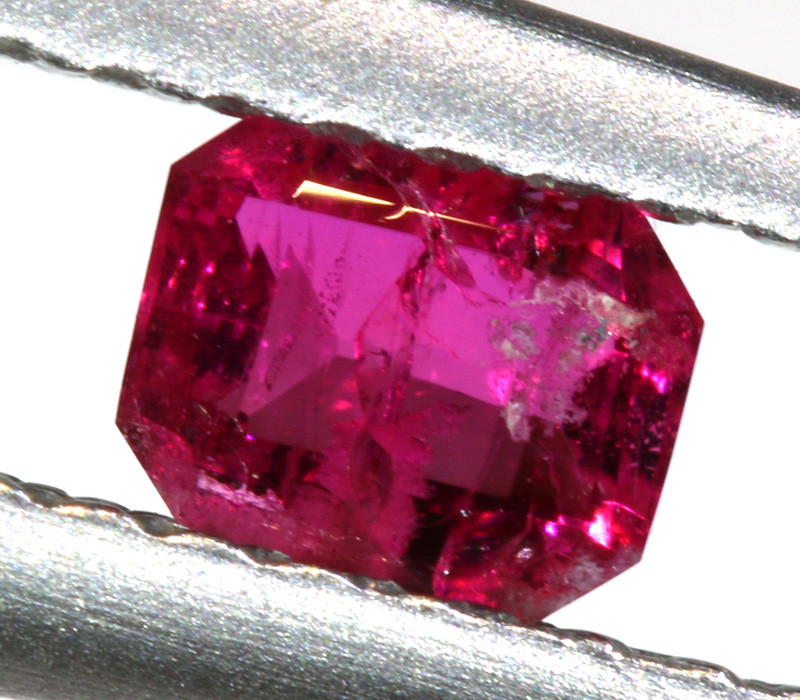
Finally, the rarest variety of beryl is red beryl (bixbite). According to the Utah Geological Survey, there’s only one red beryl for every 150,000 gem-quality diamonds! As a result, these extraordinary red gems carry premium prices.
So, we’ve covered the different types of beryl, now let’s look at the stone’s geological properties.
Beryl Specifications and Characteristics
Beryl is a chemical compound called beryllium aluminum silicate. The durable gem ranks 7.5-8 on the Mohs scale of mineral hardness, right below sapphires and diamonds.
Color: Green, blue, yellow, red, pink, colorless
Crystal structure: Hexagonal
Luster: Vitreous to resinous
Transparency: Transparent to opaque
Refractive index: 1.566-1.602
Density: 2.76
Cleavage: Indistinct
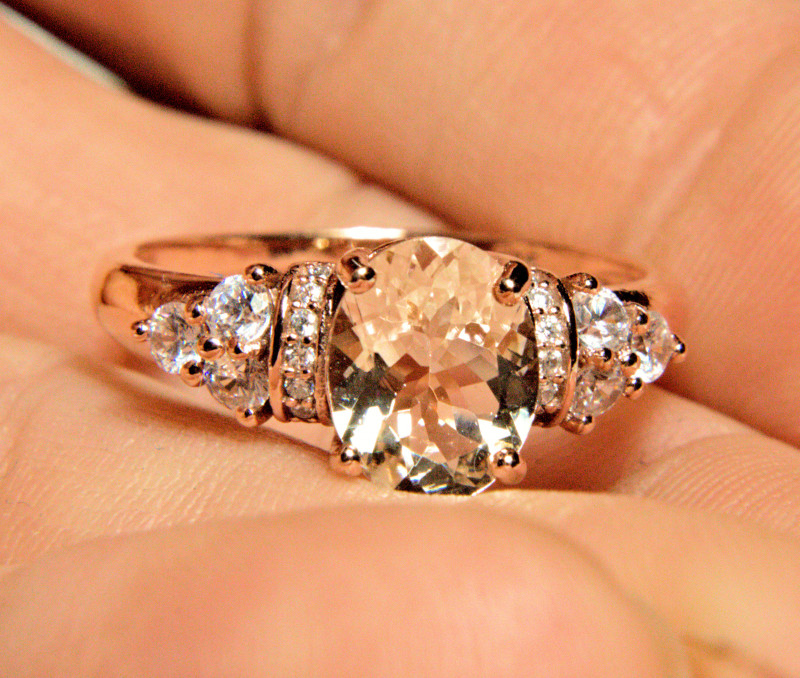
Beryl Stone Meaning
No matter which one you’ve got your eye on, all beryl stones have powerful meanings. Let’s quickly go over each beryl definition.
Emeralds are a beacon of hope and tranquility. These glowing green jewels can help soothe any troubling thoughts.
Aquamarines symbolize courage and protection; the sea-green gems can help you develop a powerful mindset and overcome any obstacles.
Speaking of powerful mindsets, heliodor stones can boost confidence and willpower.
If you’re looking to cultivate creativity, consider turning to red beryl stones. These precious gems can help you flourish in the arts.
When facing conflict in your relationships, morganites can guide you to compassion, empathy, and patience.
Goshenite gemstones can help you walk the path of truth and become a leading example for others to follow.
Does the beryl meaning traverse into the spiritual and holistic realms? You bet!
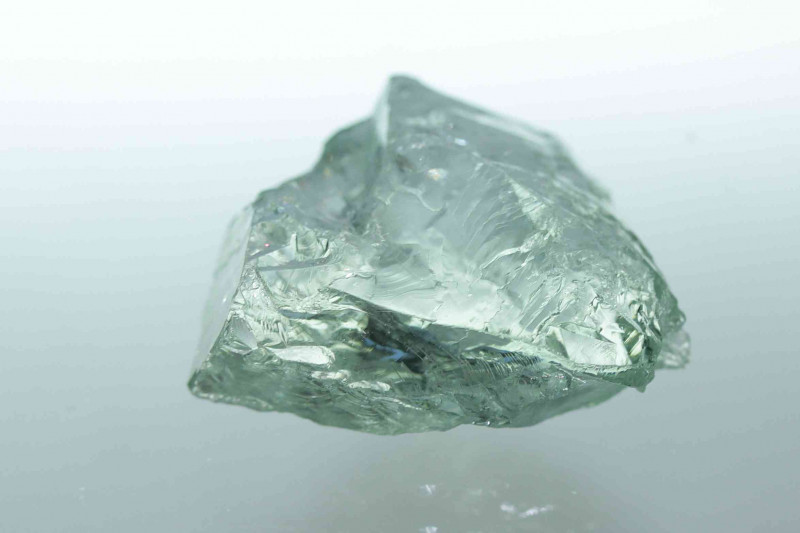
Beryl Spiritual and Healing Properties
Beryl stones have the power to activate specific chakras. These sacred energy centers are located throughout your body and stimulate physical and spiritual healing.
Emeralds, morganites, aquamarines, and red beryls are healing stones that balance the heart chakra. This chakra is found in the chest and fosters love, compassion, and empathy. To open your heart chakra, simply place any of these gemstones on your chest and get ready for love!
Is beryl ideal for jewelry? What about the gem’s size and weight? Next, we’ll take a look at the beryl stone’s gem-quality properties.
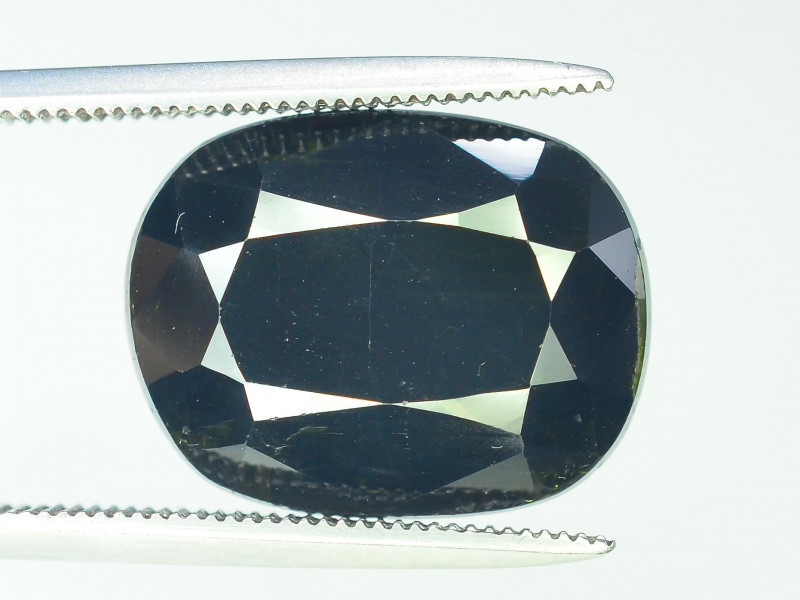
Beryl Gemstone Properties
When it comes to buying gemstones, it’s important to evaluate physical properties. How will you know if that emerald cut goshenite is ideal for earrings? Well, knowing the beryl stone’s four Cs: cut, color, clarity, and carat weight, is a great place to start!
Cut
Beryl gem cuts are just as diverse as beryl itself. Popular shapes include emerald, oval, cushion, and round. Each beryl has its own cut preferences as well.
Prized gems like emeralds are cut to preserve as much material as possible. Emerald and cushion shapes serve this purpose well. With aquamarines, the pear shape is a popular choice for illuminating the stone’s watery hues.
Morganites are often cut into square and heart shapes, while heliodor cuts are faceted to capture their brilliance. Goshenite gems are especially dazzling as cabochons!
What about beryl colors?
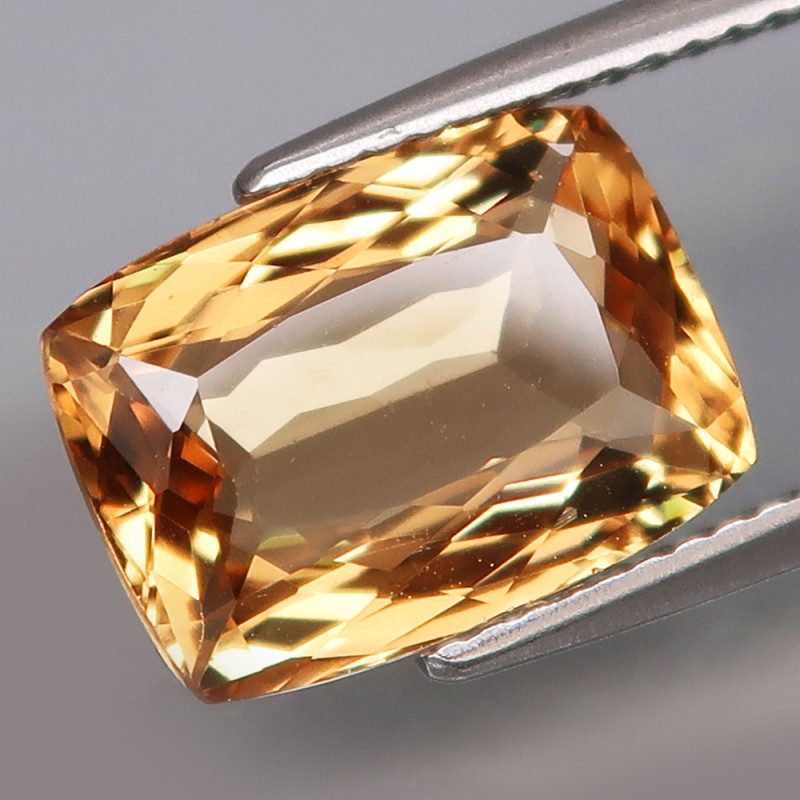
Color
Beryl stone colors are incredibly diverse. While pure beryl gems are colorless, chromium and iron elements transform them into the jewels we know and love.
Emerald derives its colors from chromium and vanadium. Unlike regular green beryl stones, emeralds must be deeply saturated to qualify as gem-quality.
Aquamarine gem colors span from light-blue to bluish-green, emitting liquid-like, tranquil shades. Lighter-colored stones are less expensive, while darker varieties are more valuable.
What about red beryl colors? These warm gems range from raspberry to deep rose shades and derive their hues from traces of manganese.
Morganite colors vary from blush pink to salmon, and the gems with vivid peach and pink tones are most popular! Hello, pink engagement ring stones!
Heliodor stones span from pale yellow to deep gold, and some even show warm hints of orange and green.
Color plays a critical role for beryl stones. But what about clarity?
Clarity
When you gaze into a gemstone, you might see something called inclusions. These are dust, debris, or mineral particles that get trapped inside a gem during its formation.
Generally speaking, gemstones that are inclusion-free or “eye-clean” possess greater value. However, that isn’t always the case!
For example, natural emeralds typically have visible inclusions. Because emeralds are so priceless, the presence of inclusions won’t diminish their value. The same goes for the extremely rare and precious red beryl.
However, other beryl gemstones like morganite and goshenite have lower value if they exhibit color and saturation-dulling inclusions. Fortunately, these jewels are usually already eye-clean.
Carat Weight
Carat weight is the final C to consider when gemstone shopping. Most gems weigh below five carats. Why? Because the larger a gemstone is, the more value it usually possesses — excluding large, visibly included gems.
Red beryls are so scarce that they rarely exceed two carats, while morganites usually weigh less than other beryl gems as well.
Aquamarine and heliodor, on the other hand, come in many sizes. That’s why heavier stones aren’t necessarily more expensive.
Goshenite and emeralds typically weigh between one to five carats. With these gems, larger weights increase prices.

Treatment
Beryl treatments are safe, common, and widely accepted procedures that enhance color and clarity. Treated beryl stones often have superior color, clarity, durability, and prices.
So, what treatment options are out there?
Nearly all aquamarine gems undergo heat treatment to remove any green tones, which result from ferric (iron) impurities. Aquamarines are heated at 700-800 degrees Fahrenheit in an oxygen-free environment. The process converts any traces of ferric iron into ferrous iron, producing aquamarine’s signature blue shades.
What about goshenite treatments?
Goshenite can be transformed into heliodor through irradiation, which involves chemically altering a gemstone’s optical properties. Like beryl heat treatments, irradiation is a safe and permanent procedure that produces stellar results.
We’ve tackled a lot of geological terminologies. But what about the beryl stone’s history? Let’s travel back in time to see this vibrant gem’s legacy unfold!
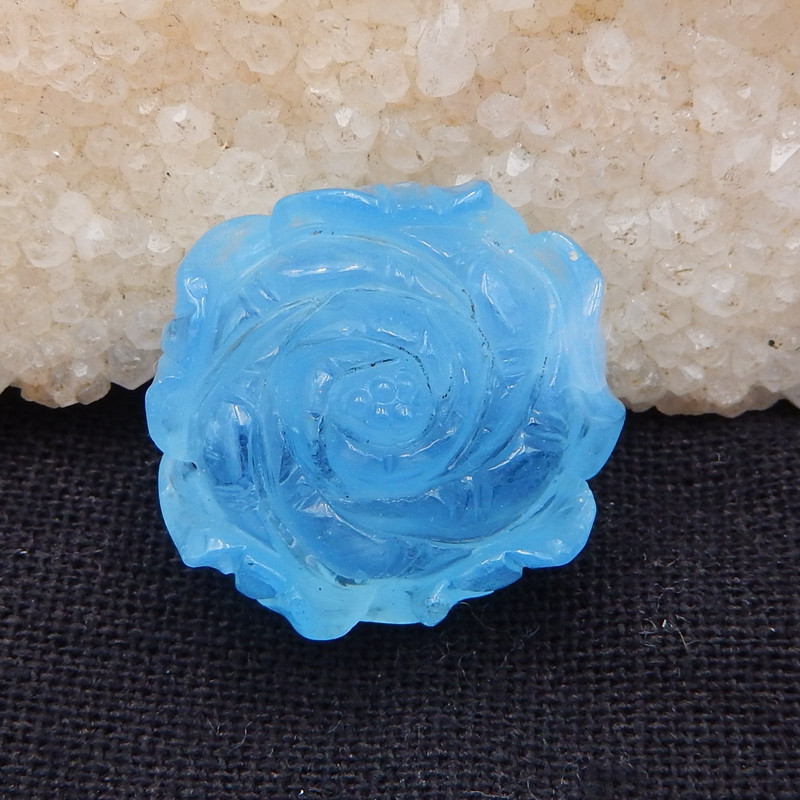
Beryl History
Beryl originates from the Greek word beryllos, which means “precious blue-green color-of-sea-water stone.”
With such a remarkable name comes an equally impressive history. In ancient Greece, beryl was used as a healing stone for kidney and bladder disorders. The Greeks would dip beryl into clean water before drinking it.
As you might know, emeralds were popular all over the world. Cleopatra was famous for her extensive emerald collection. Ancient societies believed emeralds protected chastity, promoted fidelity, and encouraged foresight. Perhaps it was emeralds that gave Cleopatra her prestige and confidence!
Meanwhile, marine travelers wore aquamarines as protective amulets. According to Greek mythology, the sea god Poseidon created aquamarine out of ocean water!
Thousands of years later, in 13th century Europe, the first eyeglasses ever invented used beryl lenses. At the time, glass couldn’t be made clear enough, so beryl stepped up to help people see better!
Now that we’ve explored the beryl stone’s rich past, let’s dive into its origins and sources.
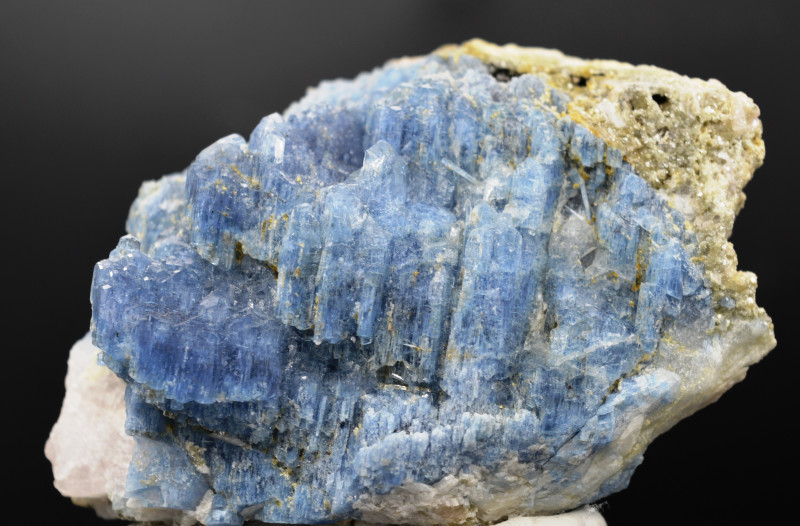
Beryl Stone Origins and Sources
Where does beryl come from, anyway? These gems are mostly formed in granite pegmatites – igneous rocks with large crystals.
Other origins include Colombian limestones and tin and tungsten ores. Over in the Russian Ural Mountains, beryl stones form in mica schists – metamorphic rock made up of many minerals.
Beryl mines exist worldwide in regions like the US, Canada, Mexico, Russia, Africa, and Burma.
Emeralds mainly hail from Colombia, Brazil, and Zambia. While Colombia boasts the finest emeralds around, Brazilian emeralds are darker and have more inclusions, and Zambian emeralds have bluish-gray tints.
Emeralds aren’t the only beryl gemstones produced in Brazil. As a matter of fact, Brazil is a leading supplier of aquamarines!
Up in North America, Utah’s Wah Wah Mountains are home to the only red beryl deposit in existence. Leave it to those rugged Western mountains to produce something so rare and exotic!
Now that we’ve nourished ourselves with beryl healing energy, let’s look at gemstone care and maintenance.
Beryl Care and Maintenance
Taking care of beryl gemstones is simple and effortless! By taking the following steps, your jewelry will remain just as flawless as the day you bought it.
First, avoid getting scratches on your gems. Be sure to limit sunlight exposure to best preserve your stone’s vibrant hues.
Avoid mechanical cleaners to prevent tarnishing.
Instead, keep your jewels sparkling and clean by rinsing them in mild detergent and warm water.
After that, gently pat them dry with a soft cloth.
And that’s it! Keeping your jewels fresh and shiny is super easy and can be quickly incorporated into your dressing routine.
By this point, you’re probably wondering, “Is beryl a precious stone?” and if so: “How much does it cost?”
We’re glad you asked! Let’s now browse through beryl prices.
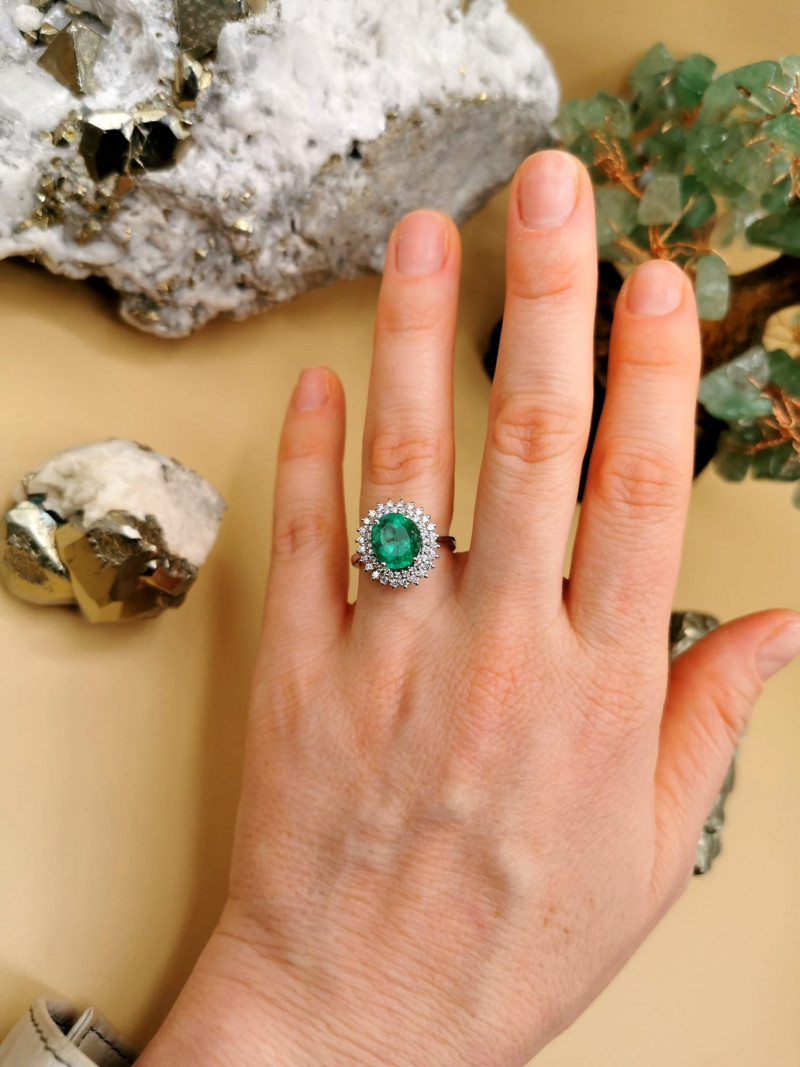
Beryl Stone Prices and Value
What is the value of beryl? With so many varieties, pricing can seem overwhelming. Not to worry, we’ll break them down together!
Emerald
While emeralds have an expensive reputation, their prices vary greatly depending on gem quality. Commercial grade emerald stones range from $30-250 per carat, while top-tier emeralds cost $2.9k-9.8k per carat.
Aquamarine
Aquamarines have a diverse price range as well. Gem quality aquamarine stones range from $5-100 per carat, while premium prices go up to $675 per carat.
Red Beryl
Out of all its cousins, rare red beryl stones command the highest prices. These one-source gemstones can cost up to $10k per carat.
Morganite
If emeralds, aquamarines, and red beryls are out of your price range, don’t fret! Morganite prices can widely vary from $85-450 per carat.
Goshenite and Heliodor
For those on the lookout for affordably priced stones, say hello to goshenite and heliodor! While prices vary, goshenite and heliodor stones cost between $1-100 per carat.
As you can see, beryl stone prices fluctuate depending on variety and quality. With so many options, you’ll find a gemstone that ticks all the boxes for your style and budget!

Shopping for Beryl Stones?
And that brings us to the end of our beryl guide! As we’ve learned, beryl isn’t just another ordinary gem. While undeniably lovely, beryl’s breathtaking qualities lie in its fascinating background and diverse properties. There’s a beryl stone for everyone!
Whether you’re enchanted by emeralds or eyeing some glimmering goshenite, you’ll find a beryl stone for any occasion. These holistic gems can invite healing, protection, and beauty into your life. Best of all, the world is always a little more vibrant with beryl by your side!
Are you looking for stunning gemstones? Browse our beryl shop today!
Search the Gemstone Encyclopedia
Related Auctions
Related Articles
Everyone has a gemstone that corresponds with their star sign. These are also known as your Star Stone. Learn more about these stones and find out what your Star Stone is.
10th May 2018
Originally the Birthstones or gemstones were associated with a zodiac sign or the month of a individuals birth. Find out what your stone is and view the stones we have for sale
8th Feb 2021
There are so many tools on the market for testing a gemstone, but what are the main tools required for simple analysis. Lets look at four tools for gemstone testing.
4th Mar 2020
Latest Articles
Yugawaralite is a rare colorless, white, or pinkish zeolite crystal named for its discovery in Yugawara, Japan. Here we uncover the multifaceted history, properties, prices, and uses of yugawaralite.
24th Mar 2025
Simpsonite is a lesser-known mineral known on the gem market for its durability, yellow-orange color, and rarity. Discover all the properties, uses, prices, and history of simpsonite.
3rd Mar 2025
Kurnakovite is a colorless crystal related to inderite and rarely faceted but known among collectors. Explore the mineral traits, history, prices, and more in this kurnakovite guide.
17th Feb 2025
Article Categories
How To's is where you will find helpful articles from gem Rock Auctions on how to cut gemstones, select gemstones and buy gemstones.
9 Articles





